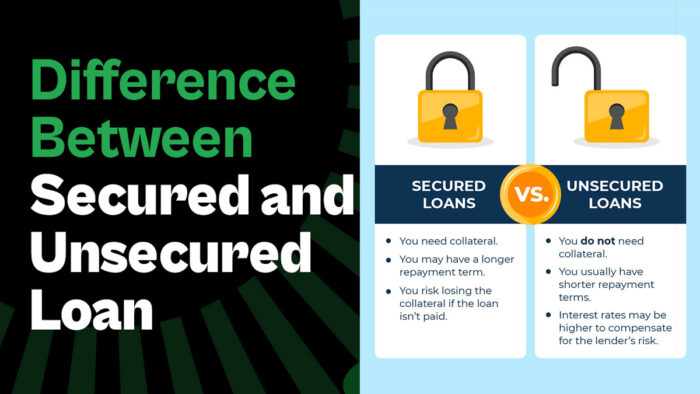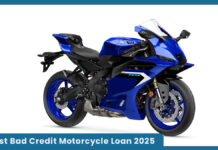In the financial landscape, navigating the countless loan options can be complicated and daunting for borrowers. One of them is the important difference between a secured and unsecured loan.

Before we begin, here is what you need to know. This distinction significantly affects the loan’s terms and the borrower’s eligibility. Additionally, it has obvious implications for the risk involved as well as the financial obligations.
In the meantime, secured loans are backed by collateral like a car or a house, which the lender can hold onto if the borrower defaults or fails to pay back the loan. On the other hand, unsecured loans do not need collateral; however, this makes them a riskier proposition for lenders and usually leads to higher interest rates for borrowers and harsher eligibility criteria.
The purpose of this article is to help you understand the difference between secured and unsecured loans so that you can choose the best loan type for your needs.
What is a Secured Loan?
A secured loan is a type of loan in which the borrower provides a form of asset as collateral to secure the loan. Thus, if the borrower does not pay back the loan or defaults, the lender has the right to seize or hold on to the collateral.
For lenders to be on the safer side, they require borrowers to present these assets, and their qualification requirements are lenient, so you can access high loan amounts.
How do Secured Loans Work?
A secured loan is a type of financing where the borrower pledges an asset as collateral to guarantee the loan. This asset could be anything of value, such as a vehicle, property, or savings account. If the borrower is unable to meet the repayment obligations, the lender has the authority to seize the collateral to recover the outstanding loan amount.
Because of the presence of collateral, secured loans are seen as lower-risk by lenders. This risk reduction typically translates into benefits for the borrower, including easier qualification criteria, lower interest rates, and the potential for larger loan amounts compared to unsecured loans, which do not require collateral.
Pros and Cons
Here are the advantages and disadvantages of taking out a secured loan:
Pros
- Lower interest rates.
- Easy to qualify for.
- Higher borrowing limits.
- Credit building.
- Longer repayment terms.
Cons
- Higher interest rates.
- Strict qualification criteria.
- Possibility for negative equity.
- Longer application process.
- Penalties and fees.
- Future wealth borrowing.
When you take all of these into consideration, you will be able to figure out if the loan is the best option for you and if you are willing to take the risk.
What is an Unsecured Loan?
On the other hand, an unsecured loan is a type of loan that does not require borrowers to present any form of collateral to the lender as a borrower to secure the loan. In other words, there is no physical asset that the lender will hold on to if you default on the loan.
Instead, the lender checks borrowers’ creditworthiness to determine whether or not they are eligible for the loan. For instance, your income, ability to pay back the loan, and credit history.
How Do Unsecured Loans Work?
As mentioned earlier, unsecured loans are financial tools that do not require borrowers to present an asset as collateral to the lender. Therefore, if the borrower does not meet the required loan repayment, the lender does not have any authority to seize or hold on to any of your assets.
Because there is no collateral to give the lender a sense of security, they require high credit scores from any borrower who wants to apply. In addition to this, they have lower borrowing amounts and higher interest rates, unlike secured loans.
Pros and Cons
Here are the advantages and disadvantages of taking out an unsecured loan:
Pros
- Flexible fund use.
- Faster application process.
- Fixed repayment schedule.
- No collateral is needed.
Cons
- Rigid credit requirements.
- Debt accumulation risk.
- Negative credit impact.
- Lower loan amounts.
Consider all of these to find out if you can manage the financial risks involved in taking out this type of loan.
Secured vs. Unsecured Loan: What’s the Difference?
The main difference between a secured and unsecured loan lies in collateral. Secured loans require collateral, such as a home or car, which the lender can seize if the borrower defaults. Unsecured loans, on the other hand, don’t require collateral but typically have higher interest rates as they pose more risk to the lender.
Here is a table highlighting the differences between secured and unsecured loans:
| Feature | Secured Loan | Unsecured Loan |
| Loan Amount | Usually higher | Usually lower |
| Approval Process | Longer | Quicker |
| Interest Rate | Generally lower | Usually higher |
| Potential Fees | May involve processing fees, appraisal fees, and others. | Prepayment penalties or origination fees |
| Risk to Borrower | Possible loss of collateral | There is no risk of losing assets. |
| Collateral | Required | Not required |
| Use of Funds | Specified | Multi-purpose |
| Repayment Terms | Longer | Usually shorter |
| Qualification | Easy to qualify for | Strict eligibility requirements |
With help from this table, you will be able to understand the difference between a secured and an unsecured loan and choose which one will work best for you.



